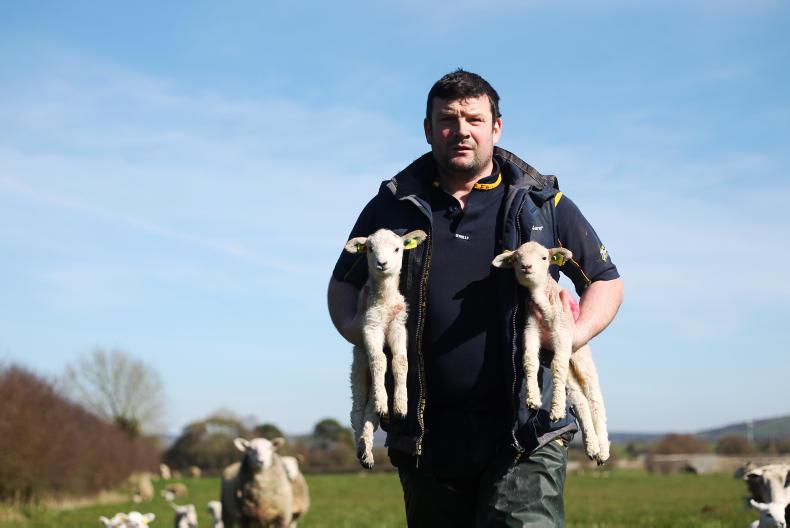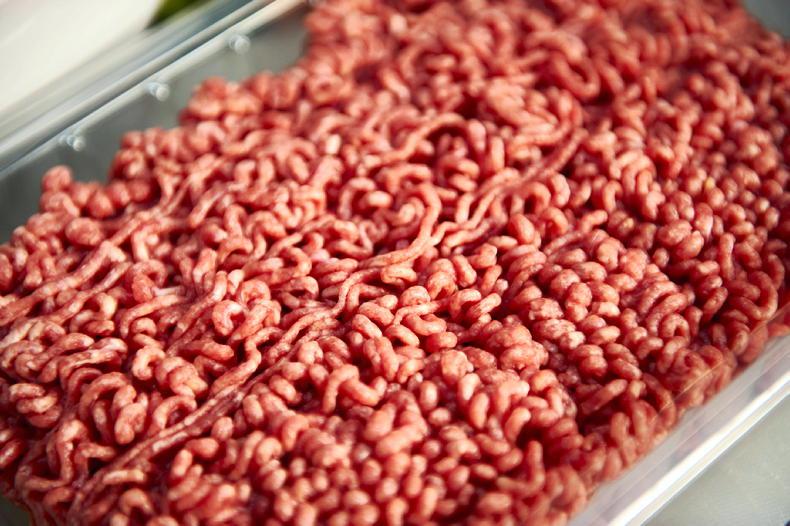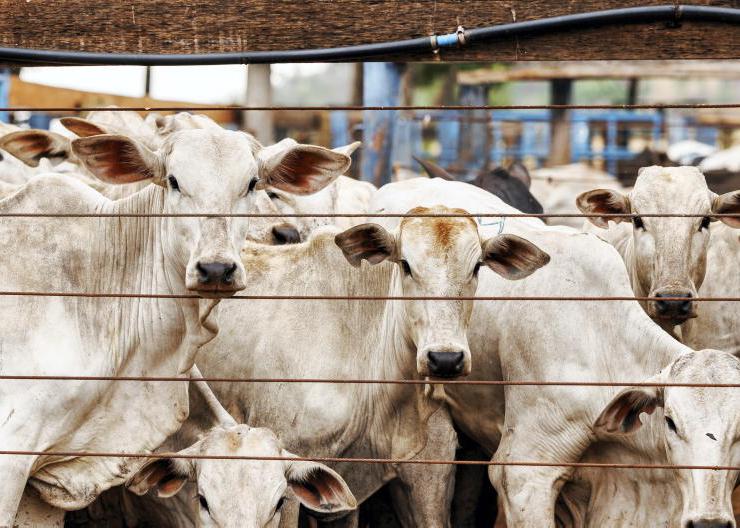The children are bursting with excitement here as the first of the lambs have started to arrive. I appear to have two shadows following me around the yard, eager to be of assistance, especially with the pet lambs.
Thankfully, health issues such as joint ill and watery mouth have not been a major problem here on the farm in previous years, just the occasional outbreak from time to time. However, we cannot become complacent.
We have stringent hygiene procedures in place, such as every newborn lamb’s navel being sprayed with iodine and all pens receiving a good cover of hydrated lime and fresh straw between ewes, at a minimum.
Clearing the pens out fully is the ideal, but I may not always achieve this standard of cleanliness during the very busy periods.
In general it has been relatively successful, with only minor issues at times, usually nearing the end of lambing.
This in part is probably down to the fact that I like to get ewes and lambs out to the fields as soon as possible – out of the sheds and away from possible sources of infection. Antibiotic resistance is something that is gaining momentum, as what we use as farmers for our livestock is also used to treat ourselves.
I try to avoid blanket pre-emptive treatments on my stock with antibiotics for this reason.
A lot of research would point out that getting adequate, good-quality colostrum into lambs at an early stage is a major step in providing them with the means to fight these infections, along with proper navel dipping and pen management.
Visiting dogs
With lambing underway here, the early morning visitors of the canine variety last week were far from welcome, not that they would be welcome at any stage during the year. Thankfully no major harm was done, but it could have been much worse if I hadn’t been up checking ewes lambing at the time and was able to intervene in time.
This is the second time in the last six months that I have had to deal with a dog attack.
Unfortunately, the dogs in question had no collar tags or microchips to identify their owners. The absence of both speaks volumes as to how the current dog licensing and chipping is being implemented, or even checked on.
It is a situation that more and more sheep farmers are having to face, as dog owners across the country become more disconnected with the consequences of what dogs can do if left to their own devices.
Annually there are 300-400 reported cases of dog attacks in the country, with on average 11 sheep killed or injured per case.
The big question is how many cases go unreported? With the local elections coming up I believe it is a great opportunity to try and get more funding for the local dog wardens and to get a centralised database for the registration of all dogs and their owners.
There have been calls for the old Bonzo ad from 35 years ago, which is just as significant today as it was then, to be aired again.
As farmers, I think we must show the savagery of these attacks on social media to highlight the damage caused by dogs and their irresponsible owners.
Read more
Three dogs attack sheep in Co Kilkenny
Farmer Writes: the importance of a work-life balance
The children are bursting with excitement here as the first of the lambs have started to arrive. I appear to have two shadows following me around the yard, eager to be of assistance, especially with the pet lambs.
Thankfully, health issues such as joint ill and watery mouth have not been a major problem here on the farm in previous years, just the occasional outbreak from time to time. However, we cannot become complacent.
We have stringent hygiene procedures in place, such as every newborn lamb’s navel being sprayed with iodine and all pens receiving a good cover of hydrated lime and fresh straw between ewes, at a minimum.
Clearing the pens out fully is the ideal, but I may not always achieve this standard of cleanliness during the very busy periods.
In general it has been relatively successful, with only minor issues at times, usually nearing the end of lambing.
This in part is probably down to the fact that I like to get ewes and lambs out to the fields as soon as possible – out of the sheds and away from possible sources of infection. Antibiotic resistance is something that is gaining momentum, as what we use as farmers for our livestock is also used to treat ourselves.
I try to avoid blanket pre-emptive treatments on my stock with antibiotics for this reason.
A lot of research would point out that getting adequate, good-quality colostrum into lambs at an early stage is a major step in providing them with the means to fight these infections, along with proper navel dipping and pen management.
Visiting dogs
With lambing underway here, the early morning visitors of the canine variety last week were far from welcome, not that they would be welcome at any stage during the year. Thankfully no major harm was done, but it could have been much worse if I hadn’t been up checking ewes lambing at the time and was able to intervene in time.
This is the second time in the last six months that I have had to deal with a dog attack.
Unfortunately, the dogs in question had no collar tags or microchips to identify their owners. The absence of both speaks volumes as to how the current dog licensing and chipping is being implemented, or even checked on.
It is a situation that more and more sheep farmers are having to face, as dog owners across the country become more disconnected with the consequences of what dogs can do if left to their own devices.
Annually there are 300-400 reported cases of dog attacks in the country, with on average 11 sheep killed or injured per case.
The big question is how many cases go unreported? With the local elections coming up I believe it is a great opportunity to try and get more funding for the local dog wardens and to get a centralised database for the registration of all dogs and their owners.
There have been calls for the old Bonzo ad from 35 years ago, which is just as significant today as it was then, to be aired again.
As farmers, I think we must show the savagery of these attacks on social media to highlight the damage caused by dogs and their irresponsible owners.
Read more
Three dogs attack sheep in Co Kilkenny
Farmer Writes: the importance of a work-life balance










SHARING OPTIONS